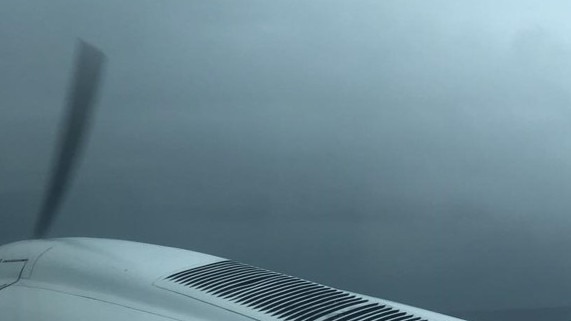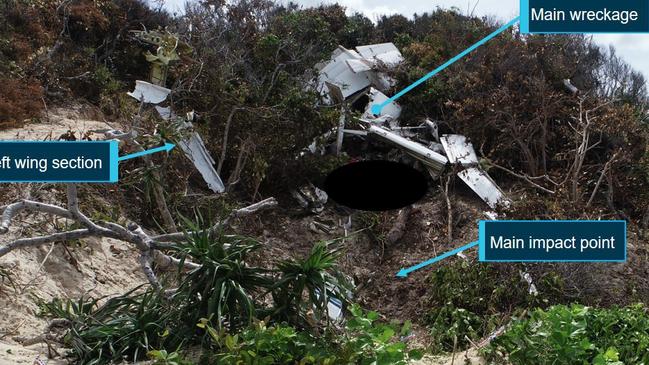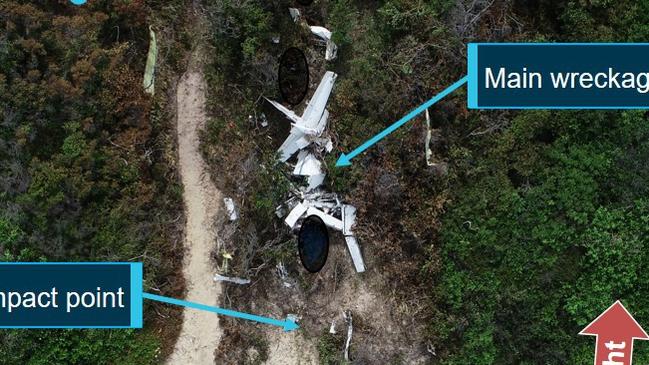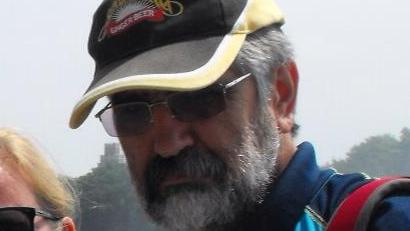Lockhart River plane crash coroner’s inquest into deaths of Ganter, Roebig, Brischke, Rawlings and Weavell
An inquest will be held into the tragic Lockhart River plane crash in 2020 that claimed the lives of all five men on board, with an emphasis on how to prevent similar accidents in future.
Cairns
Don't miss out on the headlines from Cairns. Followed categories will be added to My News.
An inquest has been announced into a tragic plane crash at Lockhart River Airport which claimed the lives of five men in 2020.
Qbuild workers Wayne Ganter, 63 Henry Roebig, 62, Wayne Brischke 57, and contractor Mark Rawlings, 49, were killed along with pilot Stuart Weavell, 36, when they plane they were in crashed into dunes near the airport on March 11, 2020.
A pre-inquest conference before Northern Coroner Nerida Wilson is set for Cairns on April 21.

Issues to be considered include the level and adequacy of Mr Weavell’s pilot training, flying proficiency and experience, and whether Air Connect Australia had in place an appropriate safety management system or appropriate standard operating procedures in relation to the conduct of flights involving RNAV GNSS approach procedures.
The Australian Transport and Safety Bureau (ATSB) released a report into its investigation last December.

It found the pilot likely did not monitor the aircraft’s altitude and descent rate.
The twin-engine Cessna crashed into sand dunes in poor visibility, 6.4km short of the runway at Lockhart River Airport.
The pilot had one missed approach at 400ft and began another but the descent was 1000ft below the recommendations, the report found.
“The aircraft was not fitted with a terrain avoidance and warning system (TAWS),” the report noted.

“Given the aircraft’s descent profile on the second approach, if a TAWS had been fitted and been operational, it would have provided the pilot with both visual and aural alerts of the approaching terrain.
“The aircraft was being flown 1000ft below the recommended descent profile, and had probably entered areas of significantly reduced visibility, including heavy rain.”

ATSB chief commissioner Angus Mitchell said at the time the plane was not fitted with a cockpit voice recorder or a flight data recorder, but nor was it required to be and because of this, the ATSB could not conclusively determine the most likely scenario to explain the descent below the recommendation.
“The aircraft appeared to have been in controlled flight up until the time of the impact, and there was no evidence of any medical problems or incapacitation for the pilot, nor pre-existing mechanical problems with the aircraft or its systems,” he said.

“Overall, misreading the altimeter by 1000ft appears to be the most likely scenario,” Mr Mitchell said.
“It is evident from the continued descent that the pilot did not effectively monitor the aircraft’s altitude and descent rate.”
There was no requirement for the plane to be fitted with a TAWS.

The inquest will consider whether CASA adequately attended to the formulation of a regulatory policy in relation to the installation of TAWS in piston engine aircraft, matters relevant to the prevention of similar accidents in the future and whether any recommendations may be made to reduce the likelihood of deaths occurring in similar circumstances, including the use of Baro-VNAV approach procedures at Lockhart River airport.
More Coverage
Originally published as Lockhart River plane crash coroner’s inquest into deaths of Ganter, Roebig, Brischke, Rawlings and Weavell




